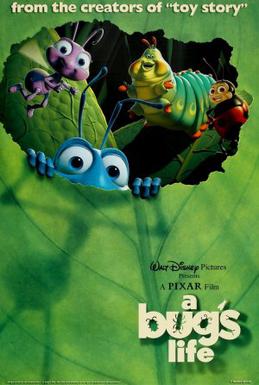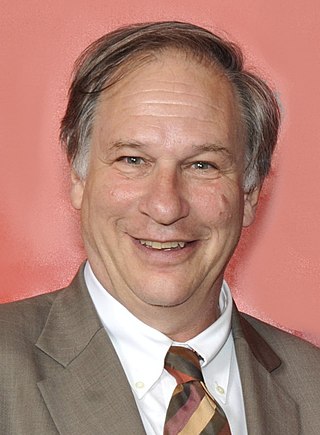
Anime is hand-drawn and computer-generated animation originating from Japan. Outside Japan and in English, anime refers specifically to animation produced in Japan. However, in Japan and in Japanese, anime describes all animated works, regardless of style or origin. Many works of animation with a similar style to Japanese animation are also produced outside Japan. Video games sometimes also feature themes and artstyles that can be considered as "anime".

Charles Martin Jones was an American animator, painter, voice actor and filmmaker, best known for his work with Warner Bros. Cartoons on the Looney Tunes and Merrie Melodies series of shorts. He wrote, produced, and/or directed many classic animated cartoon shorts starring Bugs Bunny, Daffy Duck, Wile E. Coyote and the Road Runner, Pepé Le Pew, Marvin the Martian, and Porky Pig, among others.

Bugs Bunny is a fictional character created in the late 1930s at Warner Bros. Cartoons and voiced originally by Mel Blanc. Bugs is best known for his featured roles in the Looney Tunes and Merrie Melodies series of animated short films, produced by Warner Bros. Earlier iterations of the character first appeared in Ben Hardaway's Porky's Hare Hunt (1938) and subsequent shorts before Bugs's definitive characterization debuted in Tex Avery's A Wild Hare (1940). Bob Givens, Chuck Jones, and Robert McKimson are credited for defining Bugs's design.

Looney Tunes is an American animated franchise produced and distributed by Warner Bros. It began as a series of short films that originally ran from 1930 to 1969, concurrently with its partner series Merrie Melodies, during the golden age of American animation. Following a revival in the late 1970s, new shorts were released as recently as 2014. The two series introduced a large cast of characters, including Bugs Bunny, Daffy Duck, and Porky Pig. The term Looney Tunes has since been expanded to also refer to the characters themselves.

Porky Pig is an animated character in the Warner Bros. Looney Tunes and Merrie Melodies series of cartoons. He was the first character created by the studio to draw audiences based on his star power, and the animators created many critically acclaimed shorts featuring the character. Even after he was supplanted by later characters, Porky continued to be popular with moviegoers and, more importantly, the Warners directors, who recast him in numerous everyman and sidekick roles.

Duck Amuck is an American animated surreal comedy short film directed by Chuck Jones and written by Michael Maltese. The short was released on January 17, 1953, as part of the Merrie Melodies series, and stars Daffy Duck.

Wile E. Coyote and the Road Runner are a duo of cartoon characters from the Looney Tunes and Merrie Melodies series of animated cartoons, first appearing in 1949 in the theatrical cartoon short Fast and Furry-ous. In each episode, the cunning, devious and constantly hungry coyote repeatedly attempts to catch and subsequently eat the Road Runner, but is always risibly unsuccessful in doing so. Instead of his animal instincts, the coyote uses absurdly complex contraptions to try to catch his prey, which comically backfire, with the coyote often getting injured in slapstick fashion. Many of the items for these contrivances are mail-ordered from a variety of companies implied to be part of the Acme Corporation.

Woody Woodpecker is an animated character that appeared in theatrical short films produced by the Walter Lantz Studio and distributed by Universal Pictures between 1940 and 1972.

Knighty Knight Bugs is a 1958 Warner Bros. Looney Tunes cartoon directed by Friz Freleng, The short was released on August 23, 1958, and stars Bugs Bunny and Yosemite Sam.

The Goofy Gophers are animated cartoon characters in Warner Bros.' Looney Tunes and Merrie Melodies series of cartoons. The gophers are small and brown with tan bellies and buck teeth. They both have British accents. Unnamed in the theatrical cartoons, they were given the names Mac and Tosh in the 1960s TV show The Bugs Bunny Show. The names are a pun on the surname "Macintosh". They are characterized by an abnormally high level of politeness.

A Bug's Life is a 1998 American animated comedy film produced by Pixar Animation Studios for Walt Disney Pictures as its second feature-length film, following Toy Story (1995). Directed by John Lasseter and co-directed by Andrew Stanton from a screenplay written by Stanton, Donald McEnery and Bob Shaw and a story conceived by Lasseter, Stanton and Joe Ranft, the film stars the voices of Dave Foley, Kevin Spacey, Julia Louis-Dreyfus and Hayden Panettiere, Phyllis Diller, Denis Leary, David Hyde Pierce, Joe Ranft, Jonathan Harris, Madeline Kahn, Bonnie Hunt, Brad Garrett, Michael McShane, John Ratzenberger and Richard Kind. In the film, a misfit ant named Flik, looks for "tough warriors" to save his ant colony from a protection racket run by a gang of grasshoppers. Unfortunately, the "warriors" he brings back turn out to be an inept troupe of Circus Bugs. The film's plot was initially inspired by Aesop's fable The Ant and the Grasshopper.

Robert Louis Krulwich is an American radio and television journalist who currently serves as a science correspondent for NPR and was a co-host of the program Radiolab. He has worked as a full-time employee of ABC, CBS, National Public Radio, and Pacifica. He has done assignment pieces for ABC's Nightline and World News Tonight, as well as PBS's Frontline, NOVA, and NOW with Bill Moyers. TV Guide called him "the most inventive network reporter in television", and New York Magazine wrote that he's "the man who simplifies without being simple."

The Bugs Bunny Show is a long-running American animated anthology television series hosted by Bugs Bunny that was mainly composed of theatrical Looney Tunes and Merrie Melodies cartoons released by Warner Bros. between 1948 and 1969. The show originally debuted as a primetime half-hour program on ABC in 1960, featuring three theatrical Looney Tunes cartoons with new linking sequences produced by the Warner Bros. Cartoons staff.

Willo the Wisp is a British cartoon series originally produced in 1981 by the BBC and narrated by Kenneth Williams. It became popular with children and adults, as it bridged the gap between the end of weekday children's programming and the early evening news. A second series was produced in 2005.

Harold and the Purple Crayon is a 1955 children's picture book written and illustrated by Crockett Johnson. Published by Harper Collins Publishers, it is Johnson's most popular book, and has led to a series of other related books, as well as many adaptations. The story is written in third-person point-of-view, and follows a young boy on an imaginative adventure through the night.

Roderick Henry Scribner was an American animator best known for his work on the Looney Tunes and Merrie Melodies series of cartoons from Warner Bros. Cartoons. He worked during the Golden age of American animation.
Bugs vs. Daffy: Battle of the Music Video Stars is a 1988 animated television special broadcast on CBS on October 21, 1988. The story revolves around two competing television stations that show music videos from classic Looney Tunes shorts. The stations are hosted by Bugs Bunny (WABBIT) and Daffy Duck (KPUT). This special aired after This Is America, Charlie Brown: The Mayflower Voyagers.

CGP Grey is an American educational YouTuber, podcaster, and live streamer based in the United Kingdom who creates explanatory videos on subjects including politics, geography, economics, sociology, history, philosophy, and culture. In addition to video production, Grey is known for creating and hosting the podcasts Hello Internet with Brady Haran and Cortex with Myke Hurley.
For many years, LGBT representation increased on animated series and animated films. In the 1990s, LGBT characters were depicted in animated series like South Park, The Ambiguously Gay Duo, and The Simpsons. In the early 2000s, LGBT representation increased in Western animation, culminating in GLAAD's "Where We Are in TV" report in 2005, even as representation in such animation was scattered and disparate. In the 2000s, series like Queer Duck, The Oblongs, The Venture Bros., Drawn Together, and Archer would air. It would not be until the advent of shows like Steven Universe, The Legend of Korra, and Adventure Time in the 2010s, that LGBT characters in animation would gain more of a prominent role, leading to shows such as She-Ra and the Princesses of Power in 2018 and Kipo and the Age of Wonderbeasts in 2020, along with other series in the 2020s. This page will show this progress by building off the lists of animated series which contain these characters and explain the History of LGBT characters in animation. It does not focus on LGBT characters in anime series or films, which is examined on the LGBT themes in anime and manga page.
Events in 1941 in animation.
















